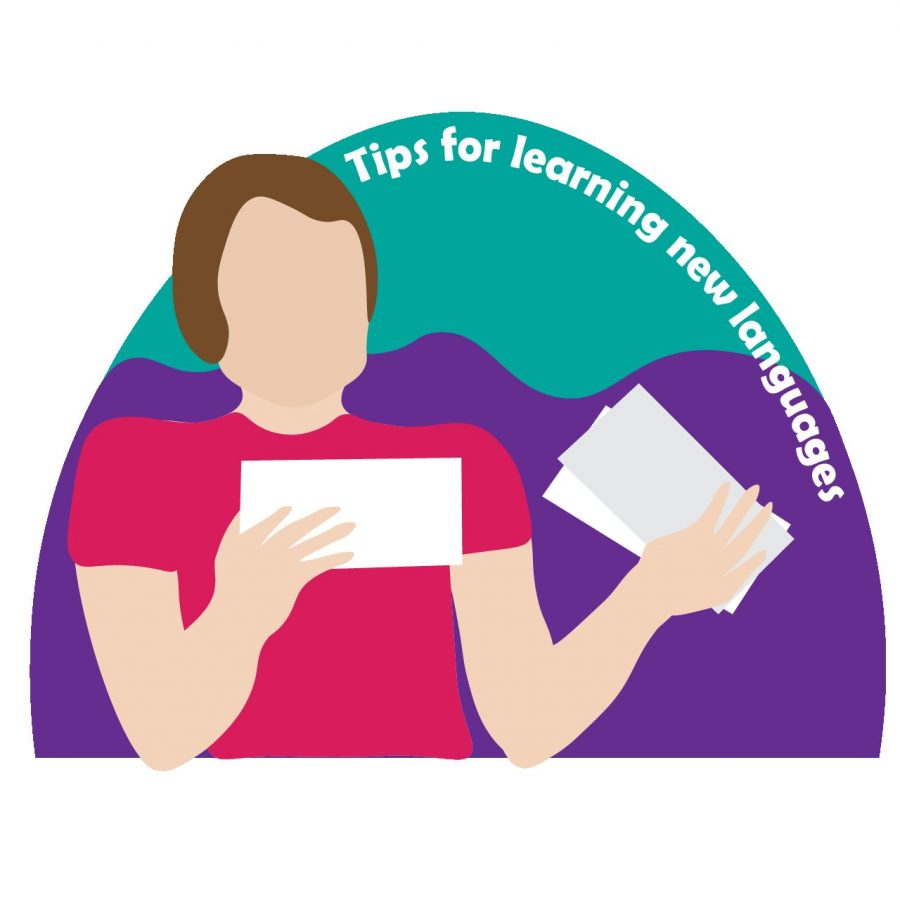Opinion—Tips for learning a new language from scratch
November 4, 2021
I’m a bit of a language-learning hobbyist. Along the way, I’ve learned a little about what works and what doesn’t work when you’re trying to get a good foundation for a new language.
The following tips are for building a functional foundation. After these steps comes the real work of learning a language, which is acquiring massive amounts of vocabulary, learning complex grammatical features and practicing listening, speaking, reading and writing in it. These tips also assume that an immersive environment isn’t available to you, although immersion is certainly the most effective way to learn.
First, the alphabet. If the writing system for your target language is one other than the roman alphabet, you’re going to need to get the basics of this new writing system down before you can progress any further.
Then, vocabulary. You should be able to recognize some of the most common words in your target language. A good start will include “yes” and “no,” question words, “hello” and “goodbye”, interjections such as “please,” “thank you” and “excuse me”, family words and common objects. This is also the time to learn pronouns such as “I,” “you,” “he/she/they,” “we,” etc.
In this phase, I usually begin by making a set of flashcards for myself. Make sure you include the pronunciation in your flashcards and practice saying these words out loud. Quizlet is a good resource for this stage, I have found. Here are some of my basic language sets in Quizlet.
Once you’re comfortable with that first set, you’re going to want to create another list of words: common verbs. Some examples are “to begin,” “to change,” “to have,” “to try,” “to help,” “to stop” and “to go.” Your list should contain about thirty to forty verbs depending on your comfort with memorization.
The third step is basic grammar. This includes negation and present-tense conjugation of the most common verbs. This step requires some research and a whole lot of patience. One thing I’ve found helpful for getting down this part is sentence diagramming. I write (longhand, on paper) the sentence structure for my target grammatical concept in its most basic form. Then I spend some time taking apart example sentences in that form.
For example, if I’m learning present-tense conjugation in German, I would write out a little chart of the conjugations for “ich,” “du,” “sie,” etc. And then I would take apart some example sentences, noting the conjugation of my target verb in relation to whatever pronoun. Again, speaking out loud while doing each step is important.
After completing these initial steps, I generally feel that I have a nice background from which to practice listening to and trying to read in my target language. At this stage, you won’t be able to understand much, perhaps just the gist of what’s being said. But you’ll start to get a feel for how the language sounds, and how speakers of the language put together their thoughts. Keep building your knowledge of grammatical structures and slowly augment your vocabulary. Soon, with a lot of work and patience, you’ll notice your comfort with the language improves. Enjoy the journey.

























